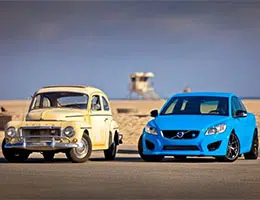 The idea of durability refers to the condition of lasting or durable : that is, it can last a large amount of time . Durability, therefore, is linked to duration (permanence, subsistence).
The idea of durability refers to the condition of lasting or durable : that is, it can last a large amount of time . Durability, therefore, is linked to duration (permanence, subsistence).
For example: "The durability of tires has been increasing thanks to technological advances" , " Oak furniture is characterized by its durability" , "The owner of the company warned me that the durability of the proposal is limited, so "That I have to make a decision as soon as possible."
Durability is usually an appreciated quality in most products , especially those with a high price . If a person plans to spend a lot of money to buy an asset, he or she generally expects the asset to last many years. Suppose someone is considering purchasing a mattress . Among other questions, you will surely study the durability of the product: how many years it should remain in good condition if given normal use.
There are objects that, instead of durability, offer comfort or low price . That is the case of disposable or disposable products . Plastic cutlery, for example, has a very low durability: in theory, it should be used only once and discarded. Metal cutlery, on the other hand, lasts for many years. To compete against metal forks, knives and spoons, therefore, plastic cutlery is cheaper and does not even need to be washed as it is used and thrown away. Something similar happens with disposable razors, with different features than devices with greater durability.
 This concept is one of those that have been curiously affected by the changes in commercial culture in recent times, which point to consumerism. While initially durability was one of the most important factors of a product, one of those that could determine a potential buyer's decision to purchase it or look for a better one, current markets intentionally seek to generate in consumers the need to replace their products with a frequency that until a few decades ago would have seemed unacceptable .
This concept is one of those that have been curiously affected by the changes in commercial culture in recent times, which point to consumerism. While initially durability was one of the most important factors of a product, one of those that could determine a potential buyer's decision to purchase it or look for a better one, current markets intentionally seek to generate in consumers the need to replace their products with a frequency that until a few decades ago would have seemed unacceptable .
Of course, this does not mean that today's products are manufactured overlooking their quality and durability, but rather that the robustness that once characterized their ancestors is no longer sought. Automobiles are among the mass consumer products that first “suffered,” so to speak, from this phenomenon: when they stopped being extremely heavy and resistant machines to prioritize lightness and stylish designs, many feared for their safety in the event of collisions. , since the material of the body and bumpers was not as rigid as that used until now.
Already in the 21st century, with the arrival of smartphones and the business model that characterizes them, we are entering an era in which a product that is one year old is considered "old." This leads technophiles, and those people who fear being criticized for not being up to date, to shell out large sums every year to get the latest version, no matter how different it is from the previous one. A current high-end mobile phone is not exactly a fragile and poorly finished device, but it surely does not have resistance to falls and accidents comparable to that of the good phones of the 80s and 90s.
Durability, therefore, must be understood in context . In the past, there were probably no limits: a good product had to last " forever ." Nowadays, it is enough for him to resist for a year, until the departure of his inevitable successor.
